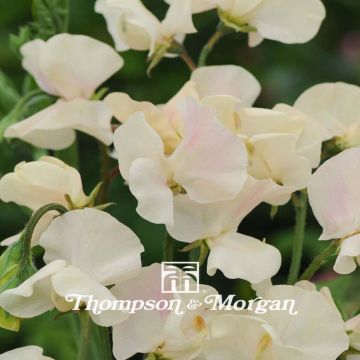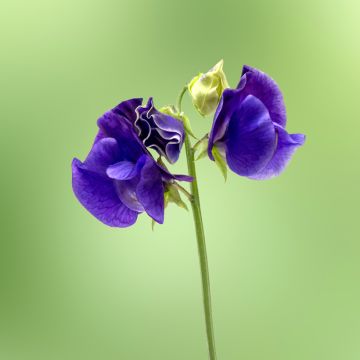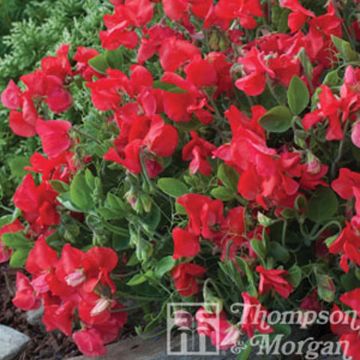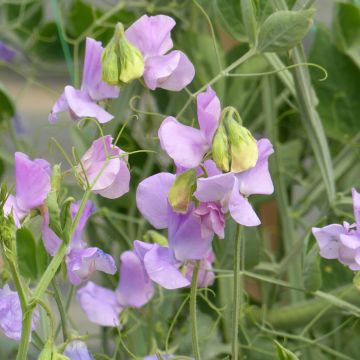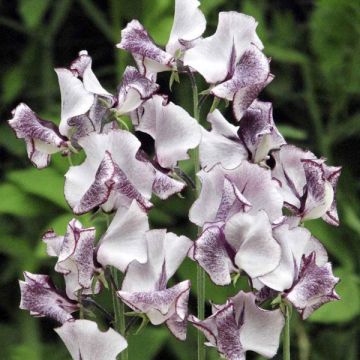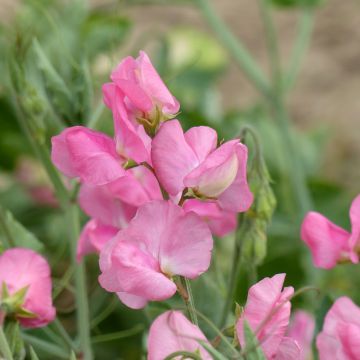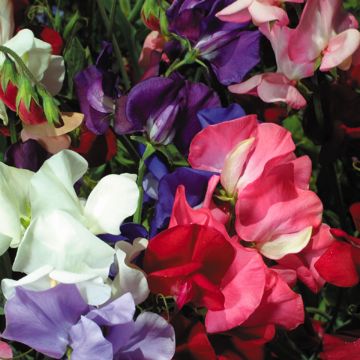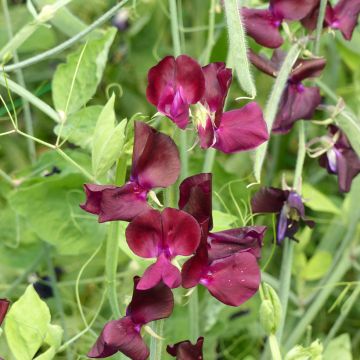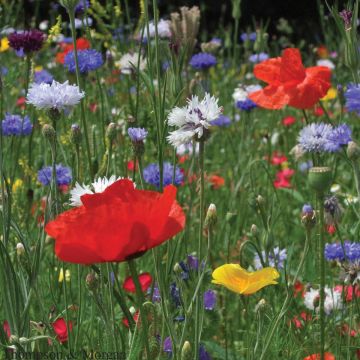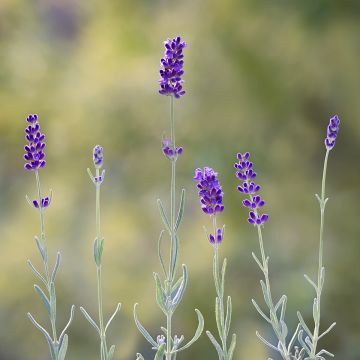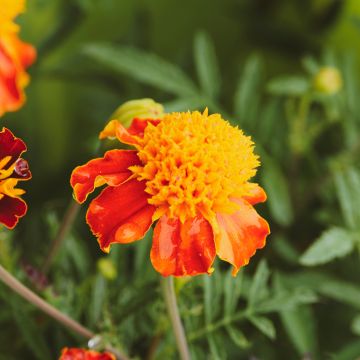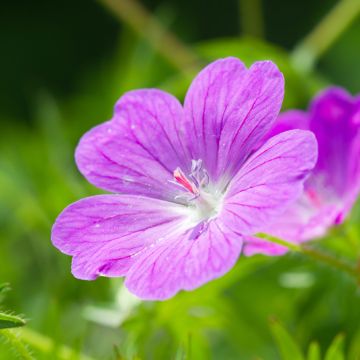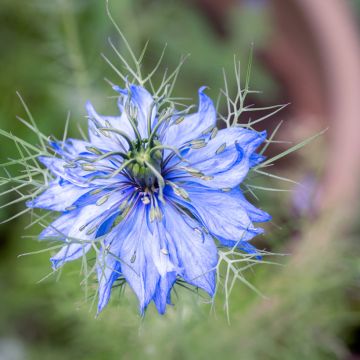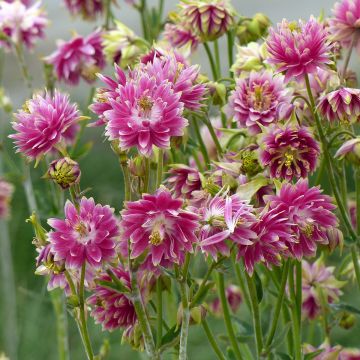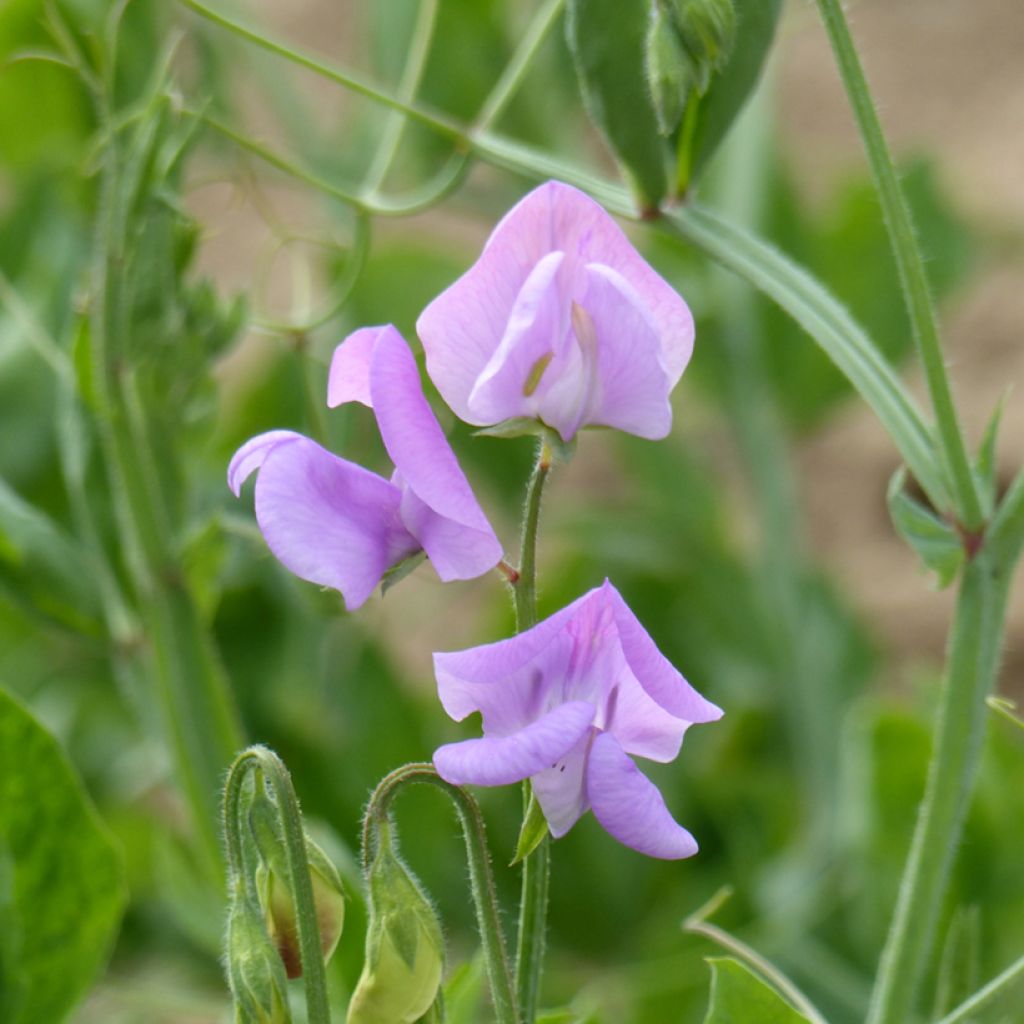

Lathyrus odoratus Leamington - Sweet pea
Lathyrus odoratus Leamington - Sweet pea
Lathyrus odoratus Spencer Leamington
Sweet pea
Flawless germination, sturdy plants. Confident for the blooming.
Marjorie, 29/04/2023
This item cannot be shipped to the selected country
Dispatch by letter from €3.90
More information
Schedule delivery date,
and select date in basket
This plant carries a 6 months recovery warranty
More information
We guarantee the quality of our plants for a full growing cycle, and will replace at our expense any plant that fails to recover under normal climatic and planting conditions.
Seed-only orders are dispatched by sealed envelope. The delivery charge for seed-only orders is €3.90.
Does this plant fit my garden?
Set up your Plantfit profile →
Description
The Lathyrus odoratus 'Leamington' brings to the Spencer series sweet peas the delicate light lilac to purple colour of its large flowers. They are deliciously scented and bloom throughout the summer on their voluble stems that wrap and cling to any support with tendrils. Gathered in small bouquets, they are lovely in a vase. In the garden, this variety mixes with other sweet peas, cascading from hanging baskets or covering an unsightly fence or an old cabin with a multicoloured cloak. This annual is sown in spring and cultivated without difficulty in fertile and moist soil in the sun.
The Lathyrus odoratus is an annual herbaceous plant in the Fabaceae family, native to southeast Italy and Sicily. Climbing thanks to tendrils, the 'Leamington' variety can reach up to 2m (7ft) in height and 30cm (12in) in width in just a few months, depending on the growing conditions. Its leaves are arranged in pairs on quadrangular stems, with stipules at the base and extended into tendrils. Their colour is light green. Flowering occurs from June-July to August-September, depending on the sowing date. The papilionaceous flowers are large, grouped in axillary clusters carried by upright stems. They consist of 5 petals, with the upper one, which is also the largest, taking the form of a banner, while the others have an intermediate shape between the lip and the tube. They emit a delicate fragrance, with a sweet floral aroma with hints of honey and musk, very feminine. The fruit is a flat pod that twists and expels its seeds at a distance. It is essential to remove faded flowers, as seed production immediately stops flowering. Sweet peas root deeply in the soil to draw water and nutrients.
Sweet peas are irreplaceable; their touching and old-fashioned flowering brings a lot of charm to bouquets, hanging baskets, and any support they bravely cover in one season. Let them climb a fence, a small garden shed, or an old shed they will transform for the summer. They are charming in summer beds, supporting neighbouring plants or bushes. They can also form beautiful carpets by mixing colours. They are inseparable from cottage gardens, like peonies, hollyhocks, foxgloves, peach-leaved bellflowers, and columbines. They also thrive in the fertile and well-watered soil of the vegetable garden, where they provide a good supply of cut flowers.
Report an error about the product description
Flowering
Foliage
Plant habit
Botanical data
Lathyrus
odoratus Spencer
Leamington
Fabaceae
Sweet pea
Cultivar or hybrid
Other Sweet Pea seeds
Planting and care
Before sowing them, let the seeds soak in a bowl of water for 6 hours. This will improve the germination speed.
Sow the Sweet Peas directly at the base of a trellis in March-April, in a small hole (group of 2 or 3 seeds) at a depth of 2.5 cm (1in). Leave a minimum distance of 30 cm (12in) between two holes.
When the seedlings have reached the stage of the second pair of leaves, cut the tip of each stem to promote branching.
Regular but not excessive watering will accelerate its growth. A sunny location, a fertiliser for flowering plants, and removing faded flowers will promote abundant flowering from June to August.
Beware of snails and slugs that love to devour young plants.
Sowing period
Intended location
-
, onOrder confirmed
Reply from on Promesse de fleurs
Flower seeds
Haven't found what you were looking for?
Hardiness is the lowest winter temperature a plant can endure without suffering serious damage or even dying. However, hardiness is affected by location (a sheltered area, such as a patio), protection (winter cover) and soil type (hardiness is improved by well-drained soil).

Photo Sharing Terms & Conditions
In order to encourage gardeners to interact and share their experiences, Promesse de fleurs offers various media enabling content to be uploaded onto its Site - in particular via the ‘Photo sharing’ module.
The User agrees to refrain from:
- Posting any content that is illegal, prejudicial, insulting, racist, inciteful to hatred, revisionist, contrary to public decency, that infringes on privacy or on the privacy rights of third parties, in particular the publicity rights of persons and goods, intellectual property rights, or the right to privacy.
- Submitting content on behalf of a third party;
- Impersonate the identity of a third party and/or publish any personal information about a third party;
In general, the User undertakes to refrain from any unethical behaviour.
All Content (in particular text, comments, files, images, photos, videos, creative works, etc.), which may be subject to property or intellectual property rights, image or other private rights, shall remain the property of the User, subject to the limited rights granted by the terms of the licence granted by Promesse de fleurs as stated below. Users are at liberty to publish or not to publish such Content on the Site, notably via the ‘Photo Sharing’ facility, and accept that this Content shall be made public and freely accessible, notably on the Internet.
Users further acknowledge, undertake to have ,and guarantee that they hold all necessary rights and permissions to publish such material on the Site, in particular with regard to the legislation in force pertaining to any privacy, property, intellectual property, image, or contractual rights, or rights of any other nature. By publishing such Content on the Site, Users acknowledge accepting full liability as publishers of the Content within the meaning of the law, and grant Promesse de fleurs, free of charge, an inclusive, worldwide licence for the said Content for the entire duration of its publication, including all reproduction, representation, up/downloading, displaying, performing, transmission, and storage rights.
Users also grant permission for their name to be linked to the Content and accept that this link may not always be made available.
By engaging in posting material, Users consent to their Content becoming automatically accessible on the Internet, in particular on other sites and/or blogs and/or web pages of the Promesse de fleurs site, including in particular social pages and the Promesse de fleurs catalogue.
Users may secure the removal of entrusted content free of charge by issuing a simple request via our contact form.
The flowering period indicated on our website applies to countries and regions located in USDA zone 8 (France, the United Kingdom, Ireland, the Netherlands, etc.)
It will vary according to where you live:
- In zones 9 to 10 (Italy, Spain, Greece, etc.), flowering will occur about 2 to 4 weeks earlier.
- In zones 6 to 7 (Germany, Poland, Slovenia, and lower mountainous regions), flowering will be delayed by 2 to 3 weeks.
- In zone 5 (Central Europe, Scandinavia), blooming will be delayed by 3 to 5 weeks.
In temperate climates, pruning of spring-flowering shrubs (forsythia, spireas, etc.) should be done just after flowering.
Pruning of summer-flowering shrubs (Indian Lilac, Perovskia, etc.) can be done in winter or spring.
In cold regions as well as with frost-sensitive plants, avoid pruning too early when severe frosts may still occur.
The planting period indicated on our website applies to countries and regions located in USDA zone 8 (France, United Kingdom, Ireland, Netherlands).
It will vary according to where you live:
- In Mediterranean zones (Marseille, Madrid, Milan, etc.), autumn and winter are the best planting periods.
- In continental zones (Strasbourg, Munich, Vienna, etc.), delay planting by 2 to 3 weeks in spring and bring it forward by 2 to 4 weeks in autumn.
- In mountainous regions (the Alps, Pyrenees, Carpathians, etc.), it is best to plant in late spring (May-June) or late summer (August-September).
The harvesting period indicated on our website applies to countries and regions in USDA zone 8 (France, England, Ireland, the Netherlands).
In colder areas (Scandinavia, Poland, Austria...) fruit and vegetable harvests are likely to be delayed by 3-4 weeks.
In warmer areas (Italy, Spain, Greece, etc.), harvesting will probably take place earlier, depending on weather conditions.
The sowing periods indicated on our website apply to countries and regions within USDA Zone 8 (France, UK, Ireland, Netherlands).
In colder areas (Scandinavia, Poland, Austria...), delay any outdoor sowing by 3-4 weeks, or sow under glass.
In warmer climes (Italy, Spain, Greece, etc.), bring outdoor sowing forward by a few weeks.

































